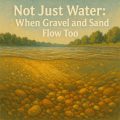Dam Removal: How Free-Flowing Rivers Are Making a Comeback Worldwide
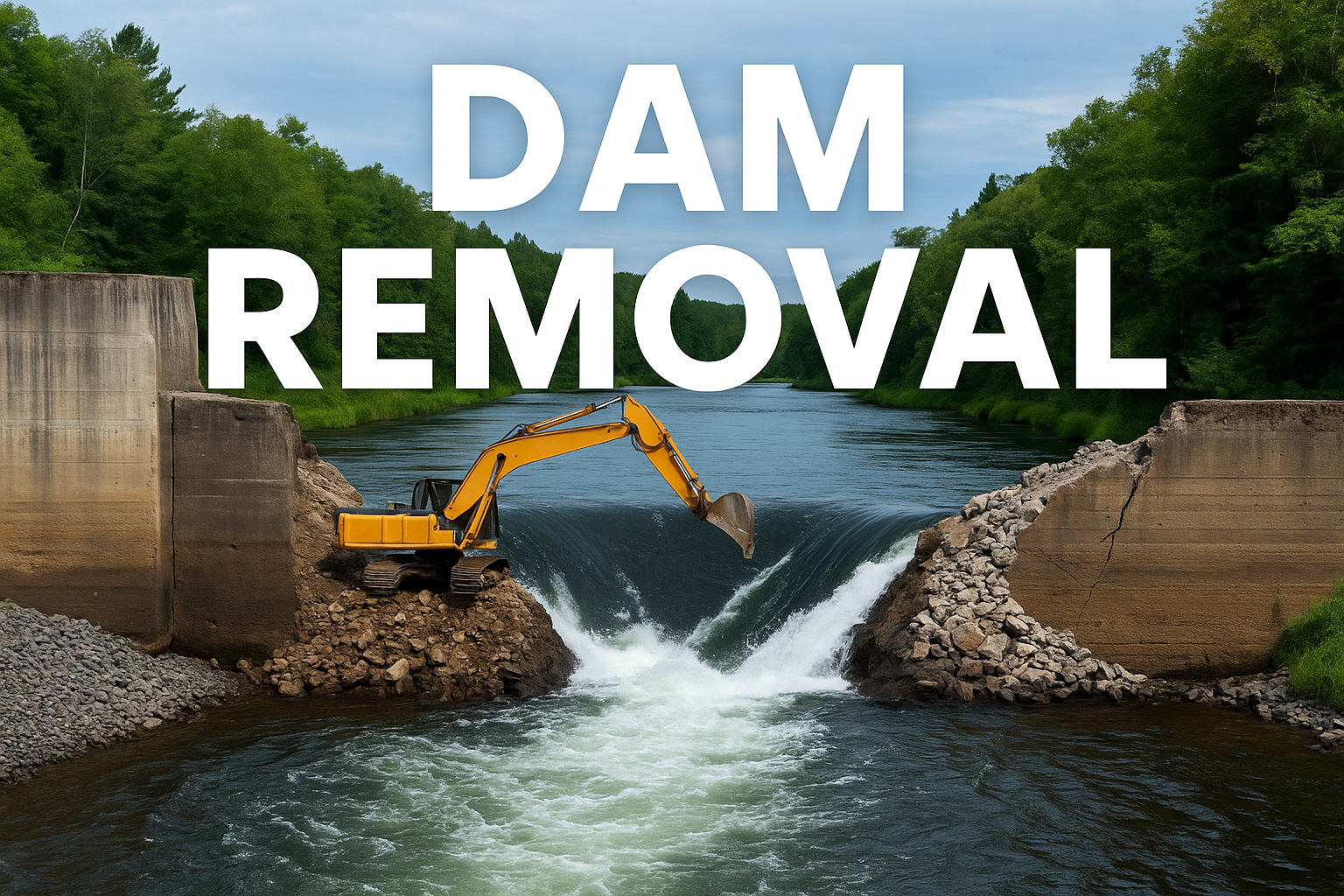
Discover how dam removal is transforming rivers around the world—restoring fish migration, ecosystems, and natural river flow from the Elwha to the Klamath.
For centuries, rivers have been shackled. Massive concrete dams halted their flow, fractured ecosystems, and flooded ancestral lands—all in the name of progress. But around the world, a new story is being written: rivers are being set free. Welcome to the age of dam removal—one of the boldest and most hopeful movements in modern conservation.
As part of wider river restoration strategies, dam removal helps revive natural flow, habitats, and ecosystems.
🌊 Why Remove a Dam?
At first glance, removing a dam might seem like a step backward. After all, dams have long been symbols of human progress—engineering marvels that provide hydropower, regulate water supply, and support agriculture through irrigation. But as many of these structures age, their environmental costs are becoming harder to ignore.
Read more about the negative impacts dams have on rivers and their ecosystems.
Across the world, tens of thousands of dams are now obsolete, no longer serving their original purpose efficiently. Some have become safety hazards, while others block the lifeblood of entire ecosystems. Removing a dam is not about erasing the past—but about giving the river a future.
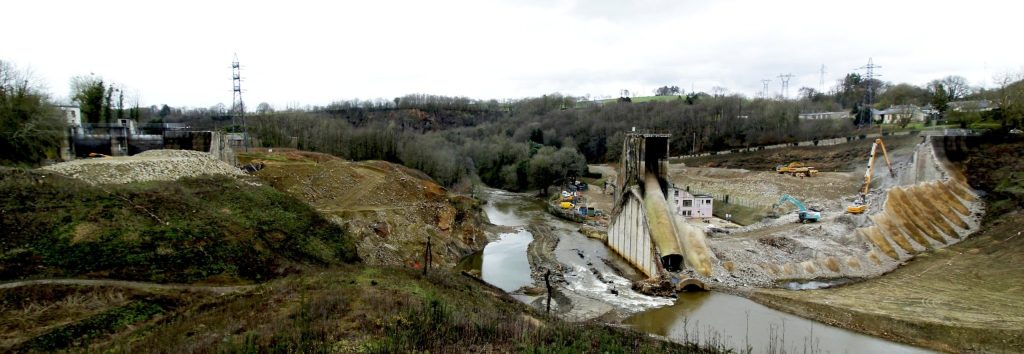
Here’s what happens when a river is unshackled:
✅ Reconnected Habitats and Free Fish Migration
Many species, especially migratory fish like salmon, eel, and sturgeon, rely on access to upstream spawning grounds. Dams create dead ends, breaking their life cycle. With the barriers gone, these fish return—sometimes within months—reviving entire food chains along the way.
✅ Restored Sediment Flow
Rivers are not just water; they’re transporters of sediment, shaping landscapes over millennia. Dams trap this sediment, starving downstream habitats and causing erosion in wetlands, estuaries, and deltas. Removal lets the river move naturally again, rebuilding lost landforms and replenishing coastlines.
✅ Improved Water Quality and Temperature
Behind a dam, water becomes still and stagnant, often warming unnaturally and depleting oxygen. This harms aquatic life and accelerates algal blooms. Free-flowing rivers are cooler, oxygen-rich, and dynamic, supporting a wider range of biodiversity.
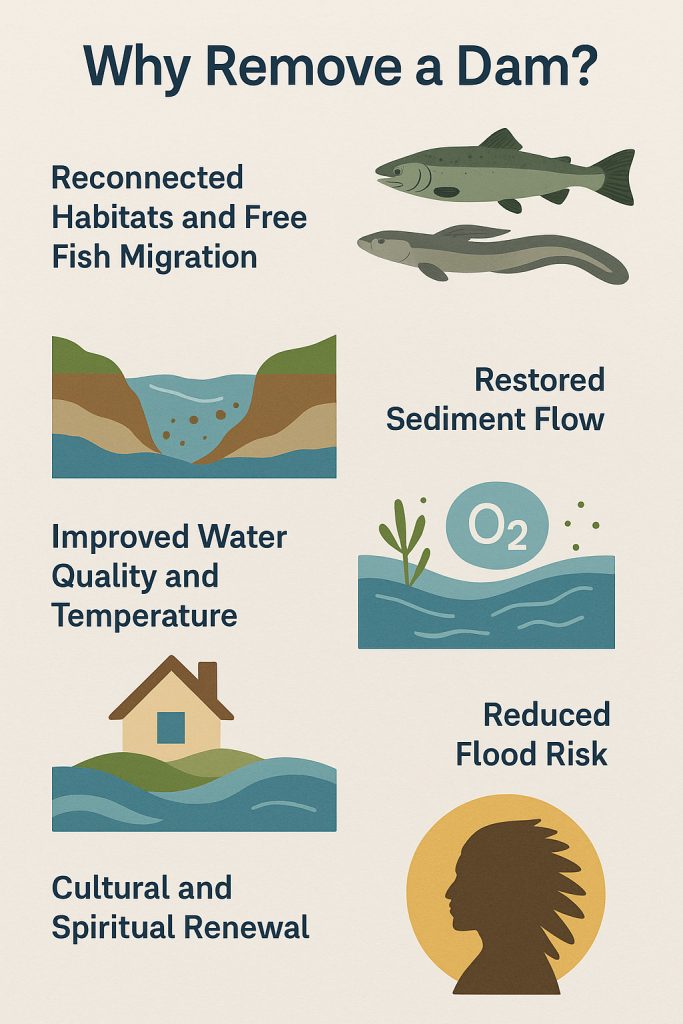
✅ Reduced Flood Risk
Ironically, some dams increase flood danger by constraining rivers and disconnecting them from their natural floodplains. When these are restored, rivers can spread and slow during high flows, absorbing excess water like a sponge and buffering downstream communities.
✅ Cultural and Spiritual Renewal
For Indigenous communities, rivers are not just waterways—they are sacred ancestors, sources of identity, ceremony, and sustenance. In California, the removal of dams on the Klamath River has empowered tribes like the Yurok and Karuk to reclaim their heritage, fish the river again, and heal deep intergenerational wounds.
In short, removing a dam is an act of restoration—not just of ecosystems, but of history, culture, and the powerful rhythm of flowing water.
🔨 How Does Dam Removal Work?
It’s tempting to imagine dam removal as a dramatic blast followed by a roaring cascade of water. In reality, it’s a meticulously planned and multi-stage process—one that balances ecological recovery with human safety and engineering precision.
Here’s how the journey typically unfolds:
🧬 1. Ecological Assessments
Before any concrete comes down, scientists study the river’s health. What wildlife lives there? What species might return once the river flows freely? Crucially, they analyze the sediment trapped behind the dam—is it toxic, or clean enough to release safely downstream? These assessments guide every next step.
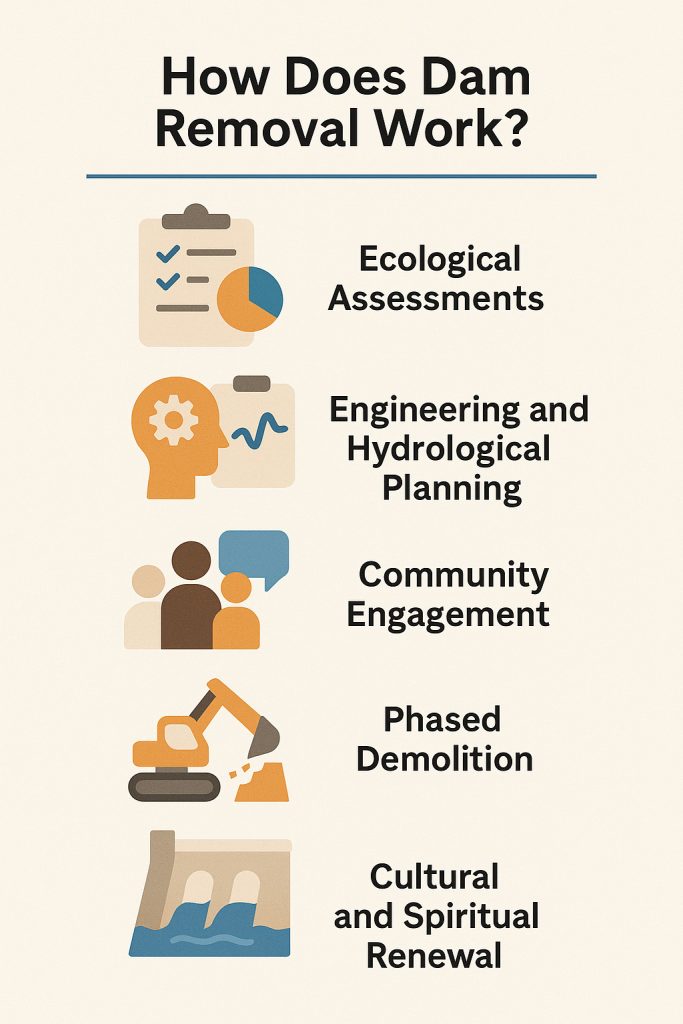
🧠 2. Engineering and Hydrological Planning
Dam removal isn’t just about what’s upstream—it’s also about what’s downstream. Engineers calculate water flow patterns, plan for possible erosion or sediment surges, and model how the river will behave once the dam is gone. In many cases, gradual removal is preferred to sudden demolition, to give the landscape time to adjust.
🤝 3. Community Engagement
People living along the river often have the strongest stake in its fate. Farmers, fishermen, recreational users, Indigenous communities—all must be part of the conversation. Dam removal projects that succeed are those built on local trust and shared vision.
🧱 4. Phased Demolition
Depending on the dam’s size, age, and purpose, removal can involve:
- Controlled breaching
- Heavy machinery dismantling the structure piece by piece
- Sediment dredging to prevent downstream silt overload
- Bank stabilization with native vegetation or stone to guide the renewed flow
This stage may take weeks or years—but the results can be seen surprisingly fast.
🌿 5. Nature Takes Over
Once the dam is gone, the river often begins self-restoring. Channels reform, fish reappear, and wetlands breathe again. In some cases, ancient native plants sprout from seedbanks that have been submerged for decades—nature’s own resurrection.
Dam removal is, at its heart, a story of reconnection—of water, land, people, and time. It’s not just demolition. It’s rebirth.
🌍 Where Is It Happening?
🇺🇸 United States: A Global Leader
The U.S. has removed more than 2,000 dams over the past few decades. Notable projects:
- Elwha River (Washington State): The world’s largest dam removal to date. Salmon returned upstream after 100 years.
- Klamath River (California–Oregon): Currently undergoing the largest dam removal in history (2023–2025), led by Native tribes and environmentalists.
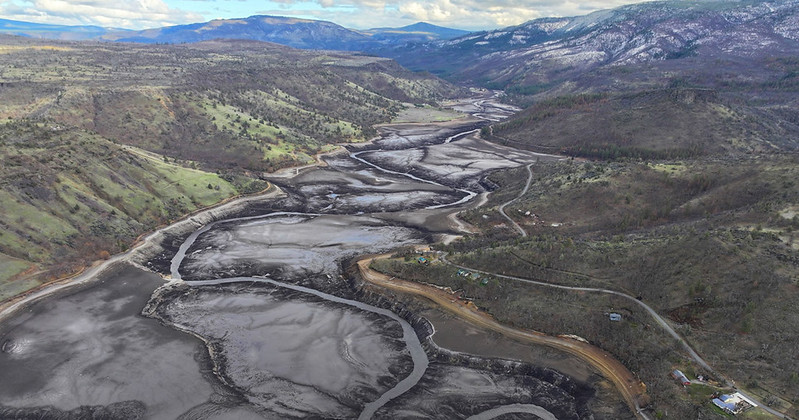
🇪🇺 Europe: Rivers in Revival
Europe is catching up fast, with an ambitious target to remove at least 25,000 river barriers by 2030:
- Spain has dismantled over 200 obsolete dams and weirs.
- France’s Sélune River is being reborn after two major dam removals.
- Finland, Sweden, and the UK are also joining the free-flow revolution.
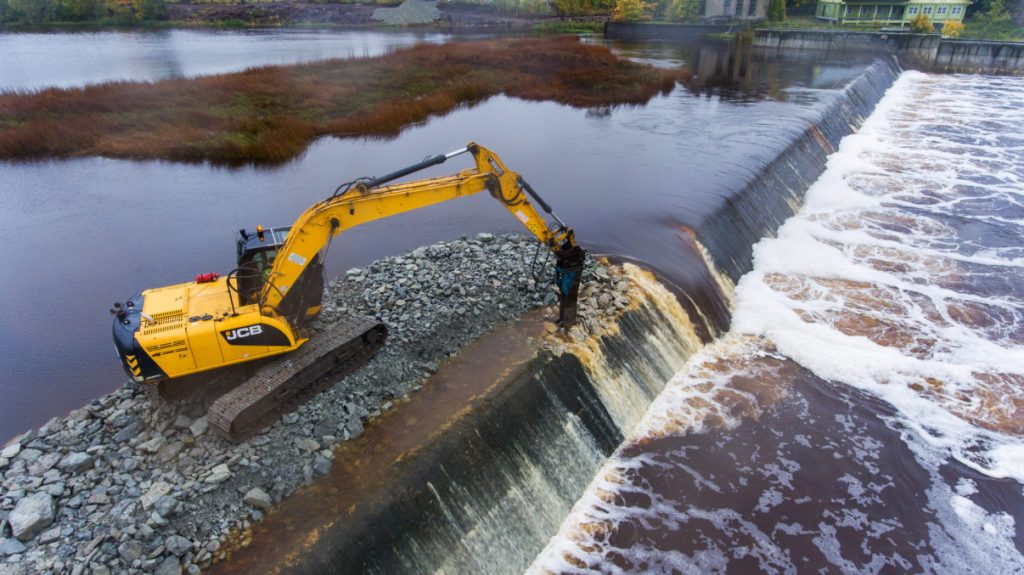
Learn more about the growing movement to remove dams across Europe
🌏 Asia and Beyond
Momentum is slower in Asia, where mega-dams still dominate. Yet grassroots movements in India, China, and Japan are growing louder, challenging the cost of ecological degradation. Pilot removals in South Korea (like on the Nakdong River) have shown dramatic biodiversity rebounds.
🐟 A New Era for Rivers
Dam removal isn’t about rejecting all hydropower—it’s about rethinking how we balance energy needs with ecological sanity. It’s about understanding that a river is not just a water pipe, but a living, breathing artery of the planet.
Freed rivers mean:
- Spawning salmon in mountain creeks
- Gravel bars for nesting birds
- Healthier floodplains that store carbon
- Thriving recreational economies built around clean water and wild landscapes
In short: freed rivers mean hope.
📌 Want to Learn More?
Check out success stories from the Elwha, Sélune, and Klamath Rivers—or read about the EU’s ambitious river restoration goals.
🛠 Curious what lies beneath the surface when a dam comes down? Read more in our post on riverbed recovery.
🌱 Which River Would You Free?
Is there a dammed river near you that deserves a second chance? Have you seen the magic of a restored stream firsthand? Share your story in the comments or tag us on Instagram @worldrivers.net

